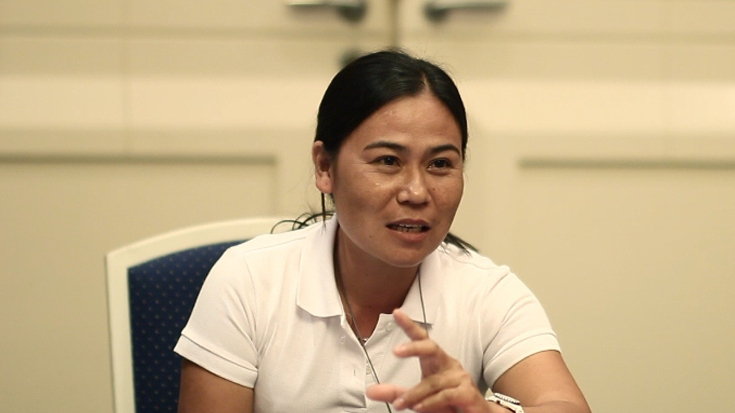Marissa Nim, 33, mother of three, swears that the new water system that she and her fellow villagers designed and built in her community in Manjuyod, Negros Oriental has changed their lives for the better.
“Besides having safe drinking water, many of us in the village could now raise hogs, goats, and poultry. Others have backyard vegetable gardens. We now have additional sources of income. We could not do these things without adequate supply of water,” Nim said.
Nim’s family is among the 1.6 million beneficiaries of a community-led government project called Kalahi-CIDSS, or Kapitbisig Laban sa Kahirapan (linking arms against poverty ) - Comprehensive and Integrated Delivery of Social Services. The project is supported by the Government of the Philippines, the World Bank, and other development partners.
Nim shared her story during the Second Asia Regional Conference on Community-Driven Development (CDD) held in Cebu recently. Hosted by the Government of the Philippines, together with its partners including the World Bank, Australian Department of Foreign Affairs and Trade, and Asian Development Bank, the conference provided an opportunity for countries in Asia applying CDD to share their lessons and learn from each other’s experiences.
"CDD encourages cooperation between citizens and their leaders to lift their community out of poverty," said Philippines Department of Social Welfare and Development Secretary Corazon Soliman, who opened the conference in a keynote speech. “This spirit of inclusion strengthens democracy where people feel, see and experience the benefits of development.”
Using CDD, poor communities organize themselves, analyze their development needs and priorities, prepare project proposals to address their common problems, and compete for block grants to finance their own projects. Community members are also responsible for implementing and managing these projects.
Since its inception in 2002, more than 6,000 projects worth $265 million have been financed in the poorest municipalities and provinces in the country. Under an expanded Kalahi-CIDSS National Community Driven Development Program, more than 25 million Filipinos in 847 poorest rural municipalities will benefit from the project, including areas affected by Typhoon Yolanda (Haiyan).
For Florencio Abad, Philippines Secretary of the Department of Budget and Management, CDD approaches improve governance and the delivery of public services. “By involving citizens in governance – from the formulation of policies that best promote their interests, to ensuring that programs improve their lives – we are making the government more responsive to the needs of those who are at the grassroots,” said Secretary Abad.
And – according to Susan Wong, World Bank Global CDD Lead Specialist – community driven development is being practiced around Asia and in the world to address poverty and amplify the voices of the poor in decisions about development that directly affects them. “That’s really the underlying story behind this conference,” she said.
“We have 111 participants from 14 countries joining this conference. The CDD programs in these 14 countries benefit some 350 million people – millions of people participating and making local level decisions about their development priorities; communities benefitting from improved access to clean water, all-weather roads, transport infrastructure, better schools and health services,” said Wong.
The move to expand the program is evident in the following countries:
• Indonesia has passed the 2014 Village Law to benefit 73,000 villages;
• Vietnam has designed a new CDD program to reach ethnic minorities in the Central Highlands region, and extended its program in the Northern Mountains region;
• Myanmar, having started a CDD program just two years ago, plans to scale-up the program six-fold in the coming two years as a central element of the government’s poverty reduction strategy; and
• Afghanistan is approaching national coverage under its CDD program, with the new president, Ashraf Ghani, pledging to reach all rural communities to ensure the delivery of vital basic services.
In conflict-affected Afghanistan, the program provides a model for government to improve its relationship with its citizens; build confidence and trust, and ultimately stability.
“Our CDD program has contributed to improving people’s access to services and social cohesion. It has improved people’s perception of their government,” said Abdul Rahman Ayubi, Executive Director of Afghanistan’s National Solidarity Program.
The program is also shown to provide measurable impacts on poverty. For instance:
• In Vietnam, CDD programs have led to increased consumption of food and non-food items by 10 percent, and poor households’ access to public services, utilities, and infrastructure by 20 percent.
• In Indonesia, the proportion of households moving out of poverty is 9 percent higher in CDD areas compared to those that are not implementing the program.
• In India, per capita consumption of beneficiaries increased by 11 percent, and their asset ownership rose by 26 percent.

